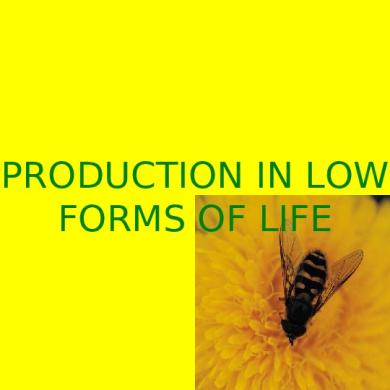Phylum Nematoda
This document was uploaded by user and they confirmed that they have the permission to share it. If you are author or own the copyright of this book, please report to us by using this DMCA report form. Report DMCA
Overview
Download & View Phylum Nematoda as PDF for free.
More details
- Words: 414
- Pages: 14
Phylum
Nemat oda
“Nematoda” Came from the Greek words: ‘Nema’ - thread
‘Eidos’ - form
The Nematodes are also called ‘round worms’. They are one of the most common phyla of animals, with 80,000 different described species (of which over 15,000 are parasitic).
They are ubiquitous in freshwater, marine, and terrestrial environments, and are found in locations as diverse as Antarctica and oceanic trenches.
Structure and Function in Nematodes Nematodes are cylindrical, unsegmented worms with bilateral symmetry.
An important difference between nematodes and flatworms is the presence of a one-way, complete digestive system.
Wastes leave the body through a separate opening at the posterior end. A one-way digestive tract enabled the evolution of specialized areas of the digestive system.
The digestive tract of a nematode consists of a mouth, a muscular pharynx, a long intestine, and an anus. A one way digestive tract is capable of carrying out more complete digestion of food than a twoway tract.
Another way nematodes and flatworms is that nematodes have a pseudocoelom. *A pseudocoelom is a partially lined body cavity. The fluid-filled pseudocoelom makes a roundworm’s body rigid and serves as a hydrostatic skeleton.
Nematodes cannot regenerate or reproduce asexually in any way. They can only reproduce sexually. Unlike flatworms, nematodes are usually not hermaphroditic. Most species have separate male and female animals, and eggs are fertilized inside the female’s body. Like parasitic flatworms, parasitic nematodes usually have complex life cycles with 2 or more hosts.
Nematodes are commonly parasitic on humans include whipworms, hookworms, pinworms, ascarids, and filarids.
The specie Trichinella spiralis, commonly known as the trichina worm, occurs in rats, pigs, and humans, and is responsible for the disease trichinosis.
Baylisascaris infests wild animals and can be deadly to humans as well.
Haemonchus contortus is one of the most abundant infectious agents in sheep around the world, causing great economic damage to sheep farms.
In contrast, entomopathogenic nematodes parasitize insects and are considered by humans to be beneficial.
Plant parasitic nematodes include several groups causing severe crop losses. The most common genre are: Aphelenchoides (foliar nematodes), Meloidogyne (root-knot nematodes), Heterodera, Globodera (cyst nematodes) such as the potato cyst nematode, Nacobbus, Pratylenchus (lesion nematodes), Ditylenchus, Xiphinema, Longidorus, Trichodorus.
Importance of Nematodes Most nematodes are free-living and harmless. However, the most notorious nematodes are the ones that are parasites of plants and animals. Parasitic nematodes cause serious diseases in humans, livestock, pets, and crops. Researchers estimate that worldwide there are a billion active roundworm infection in humans.
Nemat oda
“Nematoda” Came from the Greek words: ‘Nema’ - thread
‘Eidos’ - form
The Nematodes are also called ‘round worms’. They are one of the most common phyla of animals, with 80,000 different described species (of which over 15,000 are parasitic).
They are ubiquitous in freshwater, marine, and terrestrial environments, and are found in locations as diverse as Antarctica and oceanic trenches.
Structure and Function in Nematodes Nematodes are cylindrical, unsegmented worms with bilateral symmetry.
An important difference between nematodes and flatworms is the presence of a one-way, complete digestive system.
Wastes leave the body through a separate opening at the posterior end. A one-way digestive tract enabled the evolution of specialized areas of the digestive system.
The digestive tract of a nematode consists of a mouth, a muscular pharynx, a long intestine, and an anus. A one way digestive tract is capable of carrying out more complete digestion of food than a twoway tract.
Another way nematodes and flatworms is that nematodes have a pseudocoelom. *A pseudocoelom is a partially lined body cavity. The fluid-filled pseudocoelom makes a roundworm’s body rigid and serves as a hydrostatic skeleton.
Nematodes cannot regenerate or reproduce asexually in any way. They can only reproduce sexually. Unlike flatworms, nematodes are usually not hermaphroditic. Most species have separate male and female animals, and eggs are fertilized inside the female’s body. Like parasitic flatworms, parasitic nematodes usually have complex life cycles with 2 or more hosts.
Nematodes are commonly parasitic on humans include whipworms, hookworms, pinworms, ascarids, and filarids.
The specie Trichinella spiralis, commonly known as the trichina worm, occurs in rats, pigs, and humans, and is responsible for the disease trichinosis.
Baylisascaris infests wild animals and can be deadly to humans as well.
Haemonchus contortus is one of the most abundant infectious agents in sheep around the world, causing great economic damage to sheep farms.
In contrast, entomopathogenic nematodes parasitize insects and are considered by humans to be beneficial.
Plant parasitic nematodes include several groups causing severe crop losses. The most common genre are: Aphelenchoides (foliar nematodes), Meloidogyne (root-knot nematodes), Heterodera, Globodera (cyst nematodes) such as the potato cyst nematode, Nacobbus, Pratylenchus (lesion nematodes), Ditylenchus, Xiphinema, Longidorus, Trichodorus.
Importance of Nematodes Most nematodes are free-living and harmless. However, the most notorious nematodes are the ones that are parasites of plants and animals. Parasitic nematodes cause serious diseases in humans, livestock, pets, and crops. Researchers estimate that worldwide there are a billion active roundworm infection in humans.
Related Documents

Phylum Nematoda
June 2020 20
Activity 19_ppt Phylum Nematoda
November 2019 31
Nematoda
April 2020 29
Phylum
October 2019 30
Mengenal Nematoda
April 2020 21
Filum Nematoda
June 2020 29More Documents from "joni"

Phylum Nematoda
June 2020 20
Sexually Transmitted Disease
June 2020 20
Phylum Porifera
June 2020 12
Human Reproduction & Development
June 2020 11
Reproduction In Lower Forms Of Life
June 2020 8